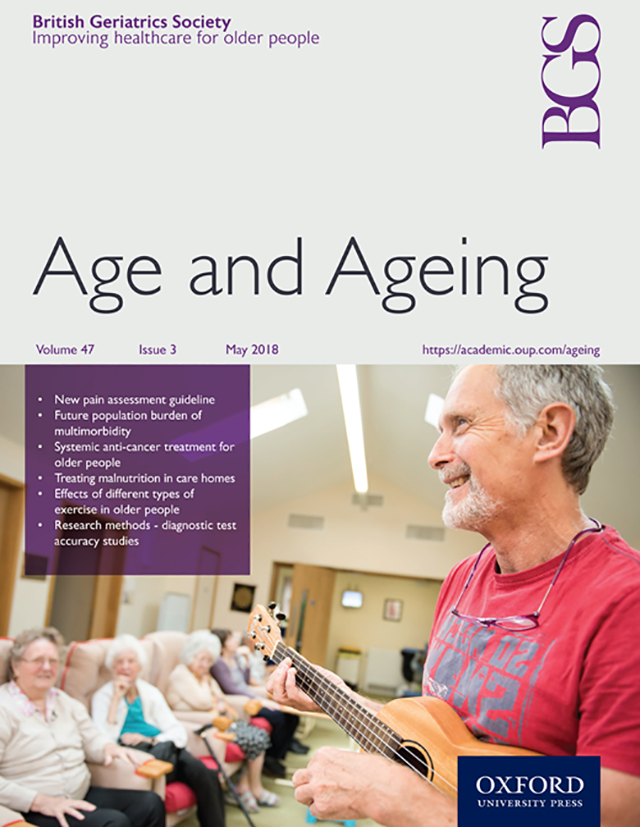Age and Ageing is the journal of the British Geriatrics Society and is currently the highest-ranked Geriatrics and Gerontology journal, with a with a Journal Impact Factor™ of 12.782 in 2022 (Journal Citation Reports, Clarivate, 2022). Age and Ageing is constantly seeking new clinicians and academics from a wide range of backgrounds to peer-review for the journal, in order to ensure the publication of rigorous scientific research of clinical relevance to the practice of geriatric medicine. While peer-reviewing may initially appear daunting or intimidating, it can be a truly rewarding experience, both on a personal level, and for the wider discipline of geriatrics. Involvement of Early-Career Researchers (ECRs) and practicing clinicians is vital to ensure that published research is as relevant as possible to the needs of older people and to the clinicians who work with them.
Broadly defined, peer review is the evaluation of scientific research by one or more experts in the field with similar competencies as the producers of the work. Peer review can foster trust in published scientific and clinical research, ensuring that only articles meeting the required methodological standards are published in academic journals.1 The method of peer review is as old as publishing itself, with scientific journals employing the practice since the 17th Century.2 Even in its embryonic form – as used by the Royal Society of Edinburgh – peer review was meant as a means of validating and authenticating scientific findings. Many years on, peer review is standard practice for academic journals and serves to both prioritise research for publication and ensuring the quality and authenticity of published research.
At an academic journal such as Age and Ageing, manuscripts containing original research findings (or a systematic review of findings in the literature) are submitted by authors to the journal for consideration for publication. Following routine technical checks, manuscripts are then screened by the editorial board, which comprises members with expertise in different areas of geriatric medicine. Papers falling within the scope of the journal with important and novel findings are then usually assigned by an Editor-in-Chief to an Associate (or handling) Editor for further assessment. If papers are deemed to be of interest to the broad readership of the journal in question and have clinically relevant findings, they will then be sent out for peer review.
Peer review involves selecting experts in a given field for detailed scrutiny and comment on scientific publications. Peer reviewers can be anyone with competence and expertise in the field, as well as those with a more general relevant knowledge-base. The identity of reviewers is known only to the editor, so that feedback is as honest and robust as possible. Typically, at least two reviewers are required. In practice, more than two reviewers may be required where there is disagreement on the merit or quality of the work, or if specific input on a particular component of the paper is needed, such as statistical analysis. Peer reviewers are invited to submit detailed comments on the manuscript and to justify a recommendation to the handling editor – such as acceptance, major or minor revision, or rejection. This feedback is invaluable to the handling editor who can synthesise this detailed information from clinical and academic experts with their own expertise to make an informed decision on the merit of a particular paper.3
For journals with a clinical focus such as Age and Ageing, insights from practising clinicians are invaluable. Journals typically have a bank of reviewers, including those who have previously reviewed for the journal but they are constantly seeking new peer-reviewers. In 2022 we were supported by more than 700 people who performed a peer review of a submitted article – for which we are hugely grateful! We tend to not invite a reviewer more than twice a year and prefer to spread the load over a wider pool of people.
It should be noted that peer review is not usually remunerated. However, there are a number of other benefits for anyone interested in ageing-related research. These include:
- The opportunity to keep up-to-date with the latest developments in the field, including to read pre-published research with implications for clinical practice.
- Learning from others’ clinical practice and improving understanding of a wide range of research topics and methodologies, and develop critical appraisal skills.
- For clinical professions, peer review is recognised for Continuous Professional Development (CPD) activity; generally considered to equate to one CPD credit per review. Recently developed platforms such as Web of Science (previously known as Publons) and ORCID enable researchers to showcase peer review and editorial contributions.
- We send an annual letter of thanks and recognition from the BGS and Age and Ageing so that peer review can be noted on the CV and be considered by academic institutions when assessing performance or promotions.
- Rewards for the most active reviewers. This year we were pleased to offer a Charity Voucher to the people who reviewed four or more times in 2022.
And remember – the papers that you have submitted or will submit as a researcher are reviewed by peer review experts such as yourself. This is an opportunity to give back to the field of academic geriatric medicine and make a small, but important, contribution of your own to clinical research.
The benefits of peer review are even more apparent for research related to the needs of older people. Geriatric medicine is different to other medical specialties for several reasons – its multi-disciplinary nature, the inherent intra and inter-individual variability in the ageing process and the lack of evidence base for many important clinical decisions and interventions.4 Peer reviewing for journals such as Age and Ageing enables reviewers to ensure that published research is specific and relevant to the needs of older people and to raise awareness and standards of research for a patient population typically underrepresented.
In a word, no. Most experienced peer-reviewers will take about an hour to read and comment on a manuscript, although it can take longer depending on your level of familiarity with the topic and the manuscript itself. In any case, time can be counted for CPD, so need not be ‘additional’ to your busy schedule. Moreover, there is no commitment to review a manuscript you are invited to review, and you can decline if you are too busy or do not feel confident enough on the topic. However, once you agree to review a specific manuscript, you would be expected to return the review within about two weeks.
Peer-reviewing for the first time may seem a little daunting but there are excellent help and training resources available online. Like anything else, it gets much easier with practice!
As Editorial Fellows for Age and Ageing, we have had the benefit of becoming involved in the peer review process, both as peer reviewers for the journal and in handling manuscripts through the editorial process under the supervision of senior editors. This has been an incredibly rewarding opportunity to observe the processes from submission to publication first-hand. From influencing editorial decisions, to ensuring the relevance and quality of manuscripts and further shaping the dialogue around ageing-related research, peer review affords a unique opportunity for both early career researchers and experienced clinicians.
This is not to say that the current system of peer review for academic journals isn’t without its flaws; indeed, peer review may not enhance the quality of scientific research5 or comprehensively detect all inaccuracies present in published research.6 Debate continues about how best to recognise peer reviewers for their time and effort. However, it is only through engagement with the current processes that we can effect change. Peer review remains the cornerstone of how leading academic journals select and publish the best scientific research with relevance to clinical practice. We have found the experience incredibly rewarding - and are happy to speak to anyone interested in our experiences.
We would be delighted to hear from BGS members who are interested in joining the team of Age and Ageing peer reviewers. Please contact the editorial team at aa@bgs.org.uk for more information on how to get involved.


